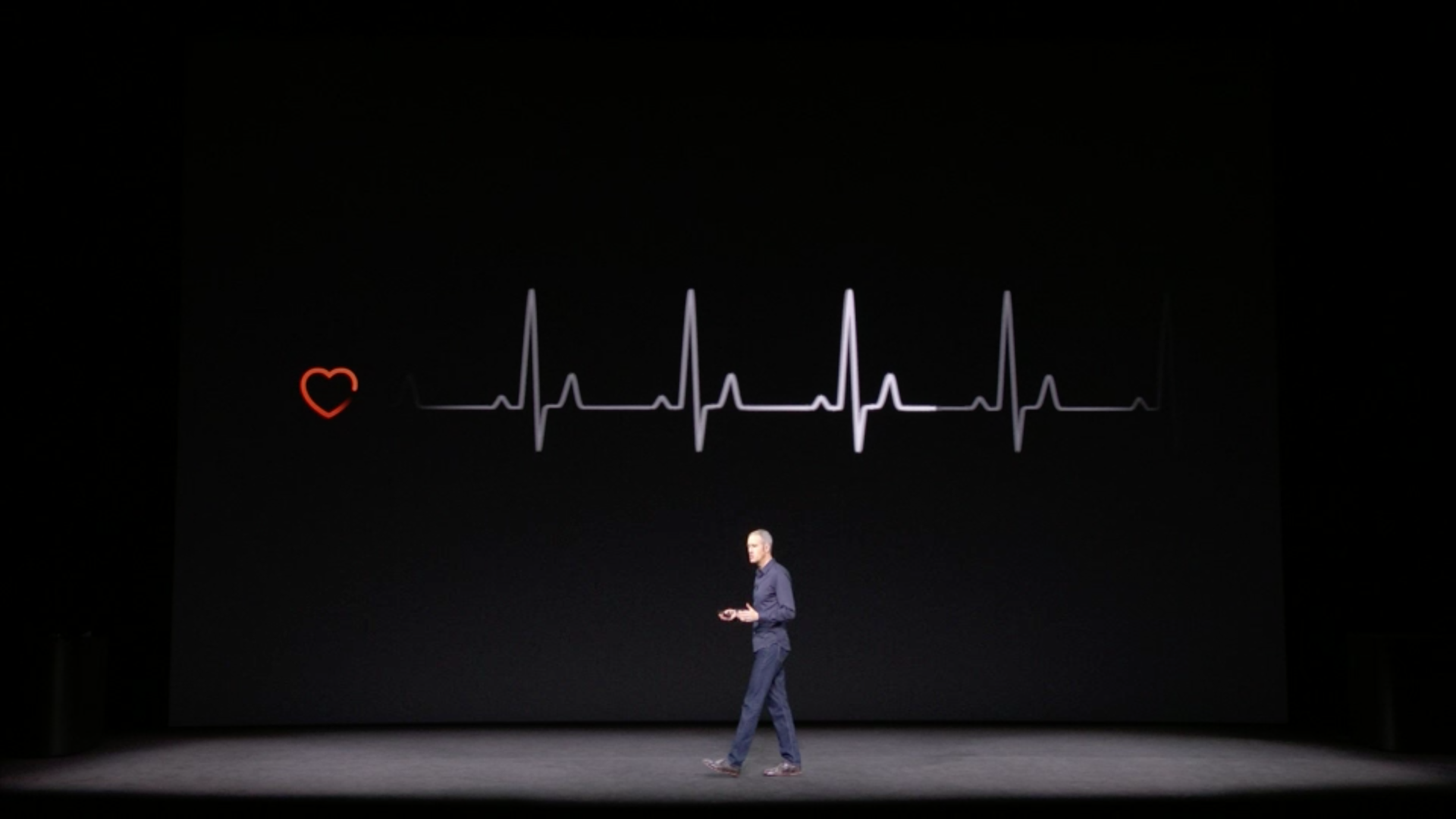
The new Apple Watch Series 3 gives users more real-time information about their heart than ever, and Apple hopes that it will also be able to alert users to potentially concerning heart beat patterns.
The current version of the Apple Watch already tracks heart rate. But the newest version comes with cellular built in, which means it can record heart rate continuously anywhere you have service. That could provide valuable, instantly accessible data for detecting when things might be awry with your heart—if it’s racing too fast when you’re at rest, for example. You can also set the monitor to alert you if your heart rate gets too high during a workout or dips too low while at rest.
The new Apple Watch will also be able to track your heart’s recovery after a workout during the cool-down period, which heart experts say is a critical measure of how fit your heart is. “Recovery is an important metric,” says Dr. Eric Topol, a cardiologist and director of the Scripps Translational Science Institute. “It’s shown in many studies that if the heart rate recovery is slow, that suggests the heart condition is not ideal, and you need better conditioning. Providing that information is a new step forward for Apple.”
MORE: How to Preorder the New iPhones, Apple Watch and Apple TV
Apple will be paying close attention to the data the new watch generates. The company is working with heart experts at Stanford University to study and analyze the data; they’re hoping to come up with algorithms to interpret the heart rate patterns so they can distinguish the worrisome rhythms from the not-so-concerning ones.
Real-time heart rate information may prove to be a useful feature for people wearing the watch, Topol says, since about 1-2% of adults in the U.S. suffer from atrial fibrillation, or abnormal beating of the heart, and don’t know it. Atrial fibrillation (AFib) can be a precursor to stroke and other heart issues, so detecting consistent blips in heart rate could be a useful way to alert people at risk for these conditions that they should see a doctor sooner rather than later. (FitBit, which sells wristwatches with continuous heart rate monitoring, said last month that they were researching how their wristbands can help people with AFib identify their abnormal heart beats.)
Having a continuous heart-rate reading can also alert people to conditions like sleep apnea. Peaks in heart rate while asleep, which wearers can see when they peruse the data when they wake, could signal periods of low oxygen flow to the body that are the sign of sleep apnea. That information could be helpful for doctors in diagnosing the condition.
MORE: Apple Announced ‘Animoji’ Today. Here’s What That Is
The Apple Watch—and other continuous heart rate monitors from companies like FitBit—still have a long way to go before they can diagnose a heart condition. But Topol anticipates that once more people are able to track their heart rate and doctors are able to learn from that data, watches and the data they collect may soon be as good as heart doctors at detecting when something goes wrong. Already, small studies show that more sophisticated trackers can pick up concerning abnormal heart rates. With time, Topol says, “they are going to be pretty darn accurate.”
More Must-Reads From TIME
- The 100 Most Influential People of 2024
- Coco Gauff Is Playing for Herself Now
- Scenes From Pro-Palestinian Encampments Across U.S. Universities
- 6 Compliments That Land Every Time
- If You're Dating Right Now , You're Brave: Column
- The AI That Could Heal a Divided Internet
- Fallout Is a Brilliant Model for the Future of Video Game Adaptations
- Want Weekly Recs on What to Watch, Read, and More? Sign Up for Worth Your Time
Contact us at letters@time.com